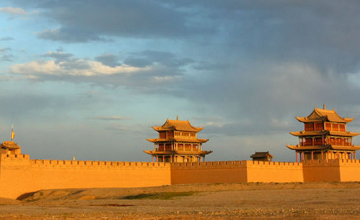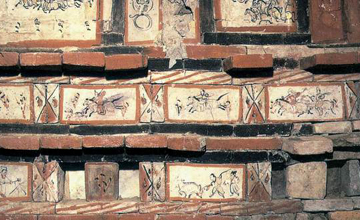The Introduction of Jiayuguan
Jiayuguan City, with a history of more than 600 years, is an important city of tourism on the ancient Silk Road. It used to be an important pass in ancient times. In Ming Dynasty, Jiayuguan Pass was built up and the pass was composed of defensive walls, gates and army camps. It was not easy to build such a grand pass. At that time, the construction facilities were simple. So many workers were employed for the construction work. And many stories concerning the construction of the pass have passed down and some of them are still popular with the local people. Now the ancient pass has been expanded into a modern city in China's northwest and it has becomes a place of interest. It is rich in tourism resources: the well-known Jiayuguan Pass, the suspended section of the Great Wall, the beacon tower relics, the Museum of the Great Wall, the Xincheng Fresco, the Qiyi Glacier, the Gobi desert and the its landscape, the Wenshu Mountain Grotto, the Heshan Mountain Grotto and the International Gliding Base. Jiayuguan is a charming city. It is one end of the world-known Great Wall (The Great Wall which starts from the Shanhaiguan Pass winds its way thousand miles and finally stops at Jiayuguan city). In the city, visitor can see tall furnaces pointing to the sky, large buildings standing side by side, rows of poplar trees guarding the wide streets. Jiayuguan City is also referred to as "the steel city in China's northwest". In 1958 the Jiuquan Steel Company was established in the city and has developed into the largest steel company in the region. Industry, tourism and agriculture are the mainstays of the city's economy. Jiayuguan City measures 40 km from east to west and 35 km from north to south. Its total area is 2935 square kilometers, and the urban area is 60 square kilometers. Its total population is 140,000 and there are people of 12 nationalities living in the city: Han, Hui, Mongol, Tibetan, Manchu, Dongxiang, Yugu, Korean, Zhuang, Tu, Baoan and Uygur. Obviously Jiayuguan City is a city of immigrants and its residents are from other parts of China, mostly from Shandong Province and the northeast of China.







